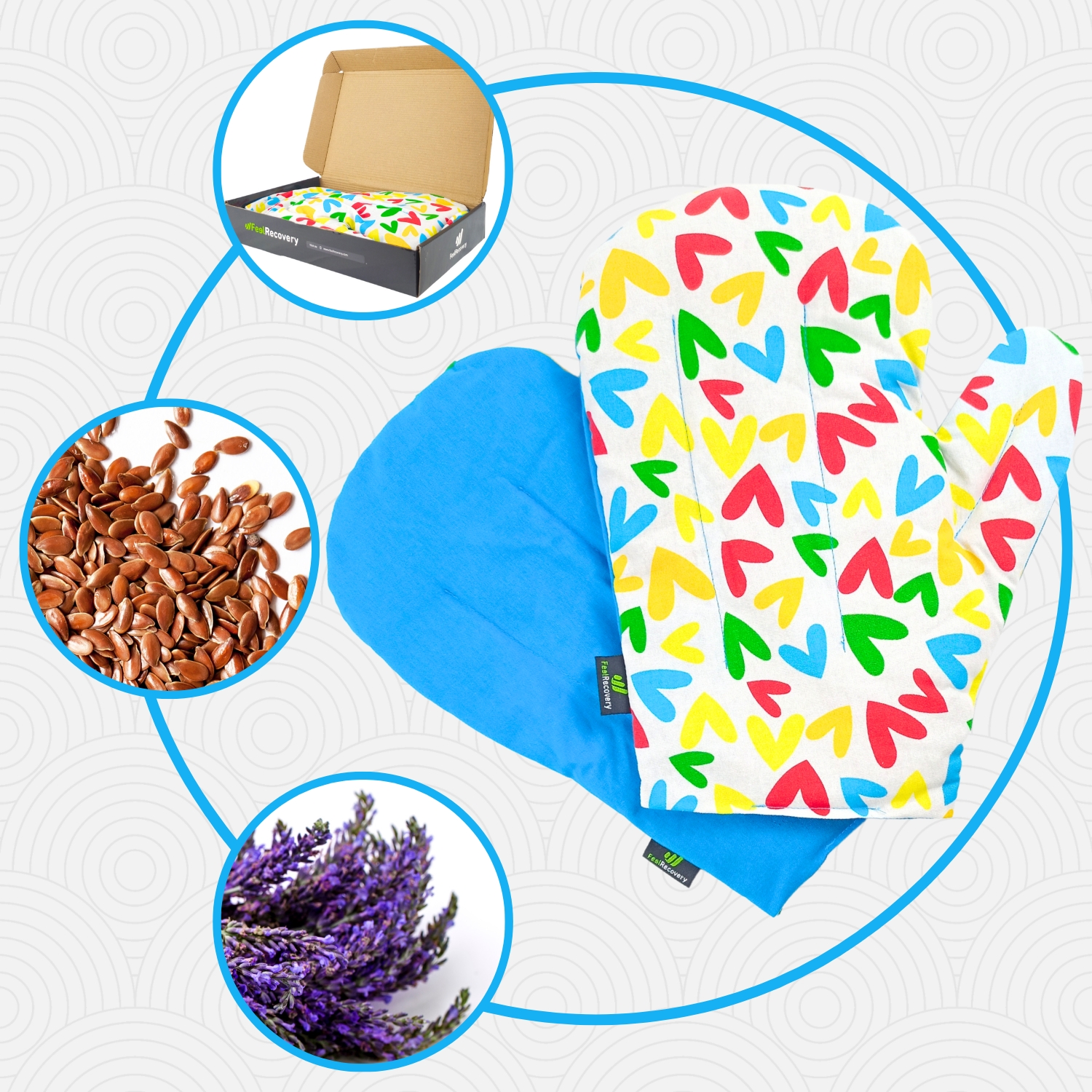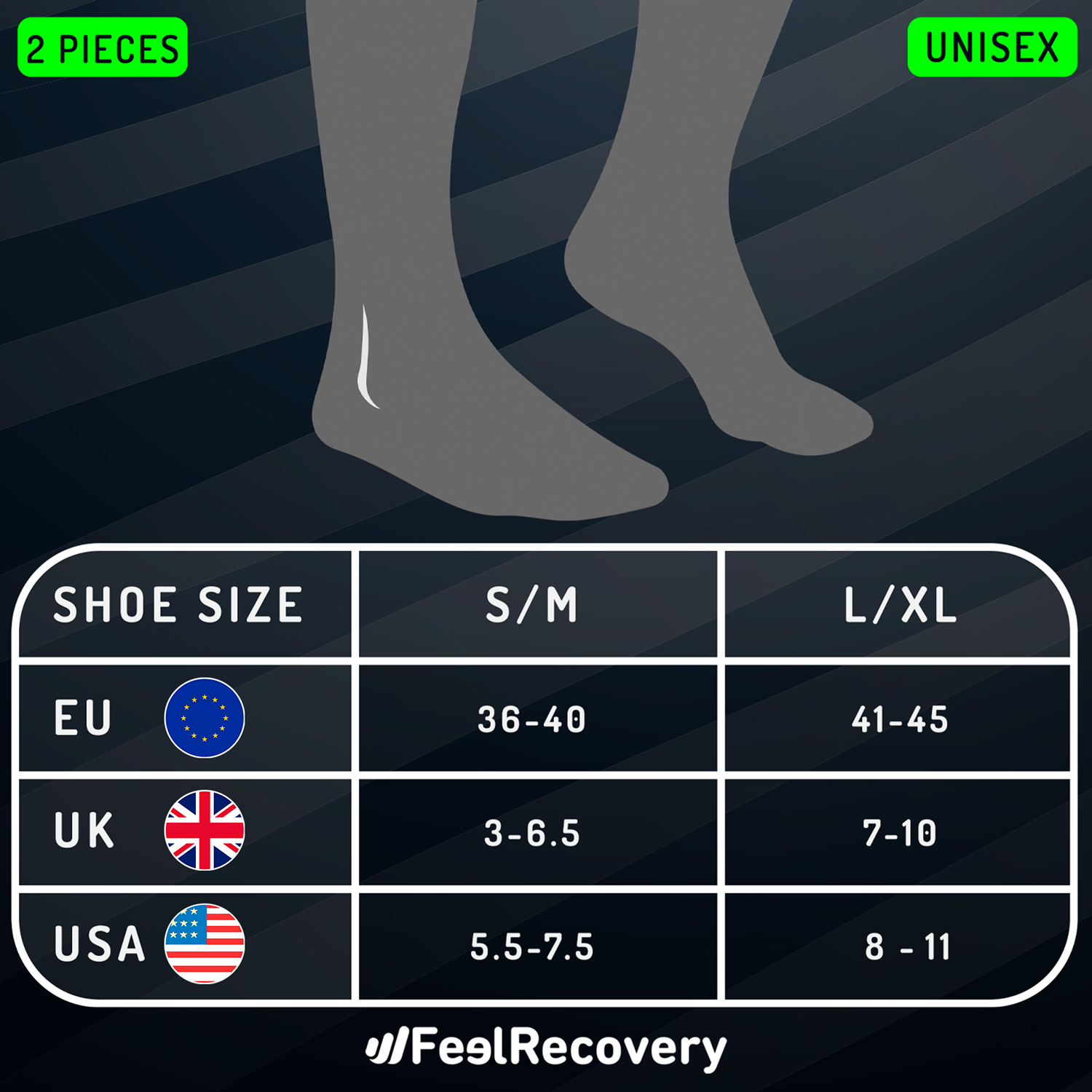The goal of pain management is not only to alleviate pain but also to improve a person's overall quality of life. It is essential to identify the root cause of pain and treat it effectively, rather than simply masking the symptoms with medication. Additionally, pain management techniques may vary depending on the type, location, and severity of the pain.
As a result, it is crucial to have a multidisciplinary approach that involves collaboration among healthcare professionals, including physical therapists, physicians, psychologists, and pain specialists. In this introduction, we will explore the importance of pain management and the various aspects that are essential for effective treatment.
Best pain relief products
bestseller
-
2 Mittens: Microwave Arthritis Gloves (Hearts)
£24,95 -
2 Mittens: Microwave Arthritis Gloves (Oxford)
£24,95 -
2 Patella Knee Strap (Black/Gray)
£12,95 -
2 Patella Knee Strap (Green/Navy)
£12,95 -
2 Patella Knee Strap (Pink/Bordeaux)
£12,95 -
2 Tennis Elbow Brace (Black/Gray)
£12,95 -
2 Tennis Elbow Brace (Green/Navy)
£12,95 -
2 Tennis Elbow Brace (Pink/Bordeaux)
£12,95 -
Microwavable Heated Slippers (Hearts)
£24,95 -
Microwavable Heated Slippers (Oxford)
£24,95 -
Microwavable Heated Slippers (Sport)
£24,95 -
Microwave Wheat Bag for Back Pain Relief (Extra Large) (Hearts)
£24,95 -
Microwave Wheat Bag for Back Pain Relief (Extra Large) (Oxford)
£24,95 -
Microwave Wheat Bag for Back Pain Relief (Extra Large) (Sport)
£24,95 -
Microwave Wheat Bag for Neck Pain Relief (Hearts)
£20,95 -
Microwave Wheat Bag for Neck Pain Relief (Oxford)
£20,95 -
Microwave Wheat Bag for Neck Pain Relief (Sport)
£20,95 -
Shoulder Support Brace (Black)
£24,95 -
Shoulder Support Brace (Green)
£24,95 -
Shoulder Support Brace (Pink)
£24,95
-
Foot Massage Roller for Plantar Fasciitis (Black)
£20,95 -
Foot Massage Roller for Plantar Fasciitis (Green)
£20,95 -
Foot Massage Roller for Plantar Fasciitis (Pink)
£20,95 -
Gel Eye Mask for Puffy Eyes (Gold/Black)
£9,95 -
Gel Eye Mask for Puffy Eyes (Orange/Pink)
£9,95 -
Gel Eye Mask for Puffy Eyes (Purple/Turquoise)
£9,95 -
Ice Massage Roller Ball (Black)
£34,95 -
Ice Massage Roller Ball (Green)
£34,95 -
Ice Massage Roller Ball (Pink)
£34,95 -
Ice Pack for Foot - Cold Therapy Socks (Black)
£20,95 -
Ice Pack for Foot - Cold Therapy Socks (Green)
£20,95 -
Ice Pack for Foot - Cold Therapy Socks (Pink)
£20,95 -
Sacroiliac Support Belt (Black)
£24,95 -
Sacroiliac Support Belt (Green)
£24,95 -
Sacroiliac Support Belt (Pink)
£24,95 -
Soft Density Foam Roller for Recovery (Black)
£34,95 -
Soft Density Foam Roller for Recovery (Green)
£34,95 -
Soft Density Foam Roller for Recovery (Pink)
£34,95
What is pain and how does it affect our daily life?
Pain is a complex sensory and emotional experience that is subjective and varies from person to person. It can be described as an unpleasant sensation that can range from mild discomfort to severe agony. Pain can affect our daily life in many ways, such as limiting our ability to perform activities, reducing our productivity, and affecting our overall mood and well-being.
Chronic pain, which lasts for more than three months, can be particularly debilitating and can impact a person's ability to work, socialize, and participate in daily activities. It can also lead to psychological issues such as depression, anxiety, and stress. Therefore, understanding pain and its impact on our daily life is crucial in developing effective pain management strategies.
Most common types of pain
Pain can be classified into various types based on its duration, location, and intensity. Some of the common types of pain include:
- Acute Pain: This type of pain usually lasts for a short duration and is usually caused by an injury or surgery. It is typically intense but goes away once the underlying cause is treated.
- Chronic Pain: Chronic pain is a type of pain that persists for more than 3-6 months. It can be caused by an injury, disease, or a medical condition and can impact daily life.
- Neuropathic Pain: This type of pain is caused by damage to the nerves and can be chronic or acute. It is often described as a burning or tingling sensation.
- Inflammatory Pain: Inflammatory pain is caused by inflammation and can be associated with conditions such as arthritis or other autoimmune diseases.
- Nociceptive Pain: This type of pain is caused by tissue damage or injury and can be acute or chronic. It is often described as a sharp or throbbing pain.
- Phantom Pain: Phantom pain is a type of pain that is felt in a part of the body that is no longer there, such as in the case of an amputee.
- Psychogenic Pain: Psychogenic pain is caused by psychological factors such as anxiety or depression and can be chronic or acute. It is often described as a dull ache or burning sensation.
Best therapies for pain management
Here are some of the best therapies for pain management, backed by scientific evidence:
- Physical therapy: This can include exercises, stretches, and manual techniques that help to reduce pain and improve range of motion. A physical therapist can create a personalized treatment plan for each individual based on their specific needs and goals.
- Cognitive-behavioral therapy (CBT): This type of therapy focuses on changing negative thoughts and behaviors that can contribute to pain. CBT can help individuals develop coping strategies and improve their overall quality of life.
- Mindfulness-based stress reduction (MBSR): This technique involves meditation, breathing exercises, and other mindfulness practices to reduce stress and manage pain. MBSR has been shown to be effective in reducing chronic pain.
- Acupuncture: This ancient Chinese technique involves the insertion of fine needles into specific points on the body. Acupuncture has been shown to be effective in reducing pain, especially in conditions like back pain and headaches.
- Massage therapy: This can include a variety of techniques, such as Swedish massage, deep tissue massage, and trigger point therapy. Massage has been shown to be effective in reducing pain and improving mobility.
- Manual therapy: This type of therapy involves hands-on techniques like massage, mobilization, and manipulation to relieve pain and improve mobility.
- Exercise therapy: Regular exercise can help reduce pain and improve overall function. A physical therapist can design an exercise program tailored to an individual's needs and condition.
- Hydrotherapy: Water-based exercises like swimming, water aerobics, and hydrotherapy can help reduce pain and stiffness, and improve range of motion.
- Heat and cold therapy: Applying heat or cold to affected areas can help reduce pain and inflammation. Heat therapy includes the use of warm towels, hot packs, and heating pads, while cold therapy involves the use of ice packs or cold compresses.
- Chiropractic care: Chiropractic care involves manual adjustments to the spine and other joints to improve alignment and reduce pain. Studies have shown that chiropractic care can be effective for reducing pain in the back, neck, and joints.
- Transcutaneous electrical nerve stimulation (TENS): TENS therapy involves placing electrodes on the skin to deliver electrical stimulation to the affected area. This can help to block pain signals and reduce the perception of pain. TENS therapy has been shown to be effective for a variety of types of pain, including back pain and osteoarthritis.
- Medications: There are several medications that can be used for pain management, including nonsteroidal anti-inflammatory drugs (NSAIDs), opioids, and antidepressants. It's important to work with a healthcare provider to determine the best medication and dosage for each individual.
- Injection therapies: These can include corticosteroid injections, nerve blocks, and trigger point injections. Injection therapies can help to reduce inflammation and relieve pain in specific areas of the body.
- Sauna: Saunas can be an effective method for sports recovery. The high temperature in the sauna causes the blood vessels to dilate, increasing blood flow and promoting relaxation. This can help to reduce muscle soreness and stiffness, while also providing a cardiovascular benefit.
It's important to note that each individual's experience with pain and response to treatment may vary. It's always best to work with a healthcare provider to determine the best treatment plan for each individual's specific needs and goals.
Tips for lifestyle changes for pain management
Here are 20 tips and tricks for lifestyle changes that can help with pain management:
- Exercise regularly: Exercise can help reduce pain by strengthening muscles and improving flexibility. Try low-impact activities like walking, swimming, or yoga.
- Maintain a healthy diet: Eating a well-balanced diet with plenty of fruits, vegetables, and lean protein can help reduce inflammation and improve overall health.
- Practice stress-reduction techniques: Stress can make pain worse, so try meditation, deep breathing, or progressive muscle relaxation to help reduce stress levels.
- Get enough sleep: Aim for 7-9 hours of sleep each night to help reduce pain and improve overall health.
- Use heat or ice: Apply heat or ice to painful areas to help reduce inflammation and ease pain.
- Maintain good posture: Poor posture can contribute to pain, so make sure to sit and stand up straight.
- Practice good ergonomics: Make sure your workspace is set up correctly to avoid straining your neck, back, or wrists.
- Use assistive devices: Consider using assistive devices like a cane, walker, or ergonomic keyboard to help reduce pain and make daily tasks easier.
- Stay hydrated: Drinking plenty of water can help reduce inflammation and improve overall health.
- Avoid smoking: Smoking can worsen pain and contribute to chronic health conditions.
- Get regular massages: Massages can help reduce muscle tension and ease pain.
- Use over-the-counter pain relievers: Over-the-counter pain relievers like ibuprofen or acetaminophen can help ease pain.
- Try natural supplements: Natural supplements like turmeric or omega-3 fatty acids can help reduce inflammation and ease pain.
- Engage in enjoyable activities: Doing activities that you enjoy can help reduce stress and improve overall well-being, which can in turn help reduce pain.
- Stay connected with others: Social support can help reduce stress and improve overall well-being, which can in turn help reduce pain.
- Try cognitive-behavioral therapy: Cognitive-behavioral therapy can help change negative thought patterns and improve coping skills, which can help reduce pain.
- Consider acupuncture: Acupuncture can help reduce pain by stimulating the body's natural pain-relieving mechanisms.
- Use essential oils: Essential oils like lavender or peppermint can help reduce pain and promote relaxation.
- Maintain a healthy weight: Excess weight can contribute to pain, so aim for a healthy weight through a combination of healthy eating and exercise.
- Keep a pain journal: Keeping track of your pain levels, triggers, and treatments can help you better manage your pain over time.
F.A.Q: Frequently asked questions
References
- Ferrell, B. A. (2000). Pain management. Clinics in geriatric medicine, 16(4), 853-873. https://www.sciencedirect.com/science/article/abs/pii/S0305417904002190
- Taylor, J., & Taylor, S. (1998). Pain education and management in the rehabilitation from sports injury. The Sport Psychologist, 12(1), 68-88. https://journals.humankinetics.com/view/journals/tsp/12/1/article-p68.xml
- Ashburn, M. A., & Staats, P. S. (1999). Management of chronic pain. The Lancet, 353(9167), 1865-1869. https://www.sciencedirect.com/science/article/abs/pii/S014067369904088X
- Koes, B. W., Van Tulder, M. W., Ostelo, R., Burton, A. K., & Waddell, G. (2001). Clinical guidelines for the management of low back pain in primary care: an international comparison. Spine, 26(22), 2504-2513. https://journals.lww.com/spinejournal/Abstract/2001/11150/Clinical_Guidelines_for_the_Management_of_Low_Back.22.aspx
- Morad, A., & Farrokh, S. (2018). Pain management. Essentials of Anesthesia for Neurotrauma, 447-460. https://books.google.es/books?hl=en&lr=&id=uDgPEAAAQBAJ
- Ferrell, B. A. (1991). Pain management in elderly people. Journal of the American Geriatrics Society. https://psycnet.apa.org/record/1991-19066-001
- Navratilova, E., & Porreca, F. (2014). Reward and motivation in pain and pain relief. Nature neuroscience, 17(10), 1304-1312. https://www.nature.com/articles/nn.3811
- Banning, A., Sjøgren, P., & Henriksen, H. (1991). Pain causes in 200 patients referred to a multidisciplinary cancer pain clinic. Pain, 45(1), 45-48. https://www.sciencedirect.com/science/article/abs/pii/030439599190163R
- Karcioglu, O., Topacoglu, H., Dikme, O., & Dikme, O. (2018). A systematic review of the pain scales in adults: which to use?. The American journal of emergency medicine, 36(4), 707-714. https://www.sciencedirect.com/science/article/abs/pii/S0735675718300081
- Hawker, G. A., Mian, S., Kendzerska, T., & French, M. (2011). Measures of adult pain: Visual analog scale for pain (vas pain), numeric rating scale for pain (nrs pain), mcgill pain questionnaire (mpq), short‐form mcgill pain questionnaire (sf‐mpq), chronic pain grade scale (cpgs), short form‐36 bodily pain scale (sf‐36 bps), and measure of intermittent and constant osteoarthritis pain (icoap). Arthritis care & research, 63(S11), S240-S252. https://pubmed.ncbi.nlm.nih.gov/22588748/





























































































